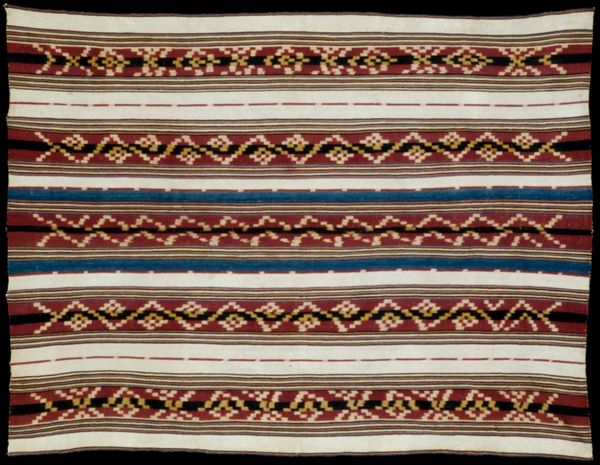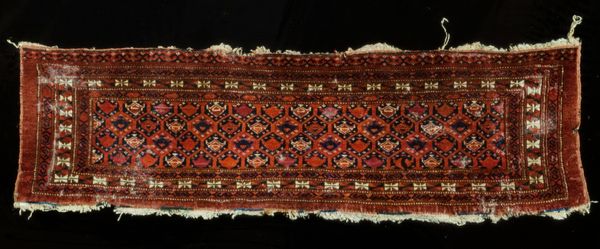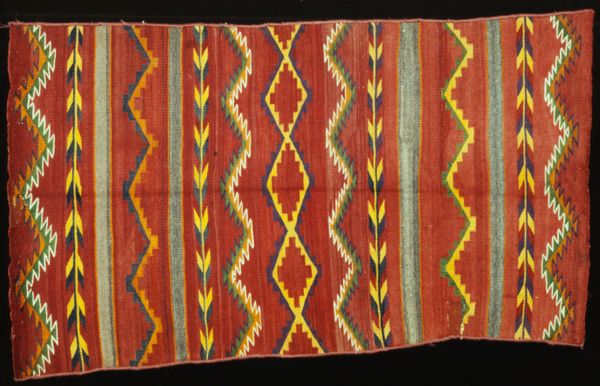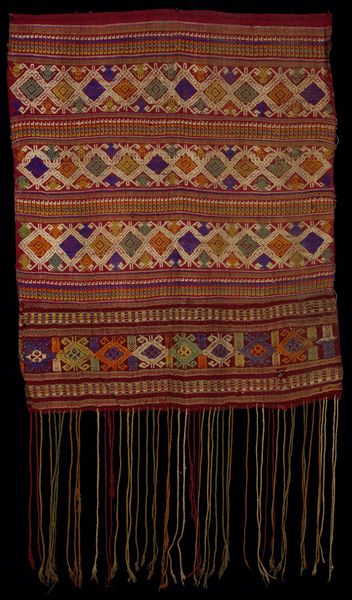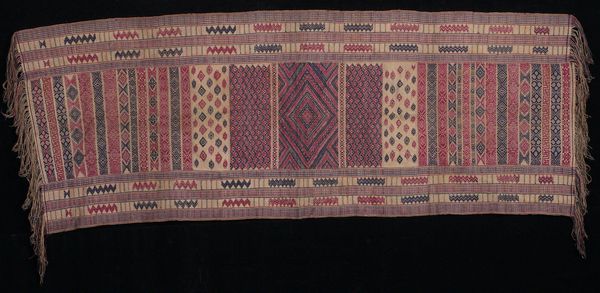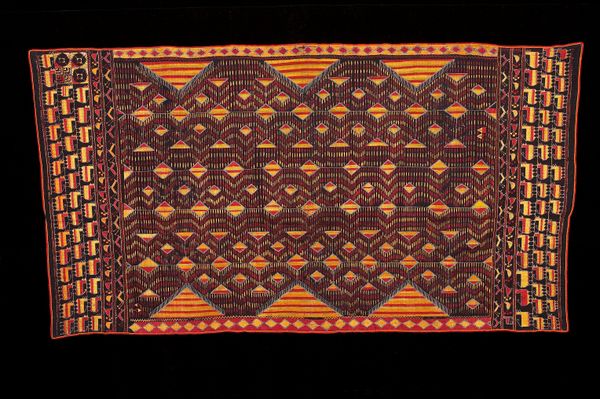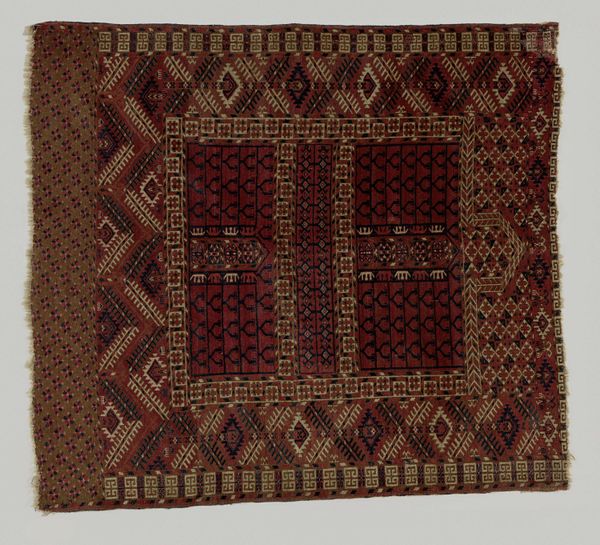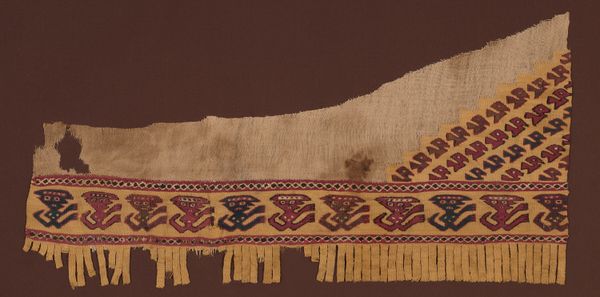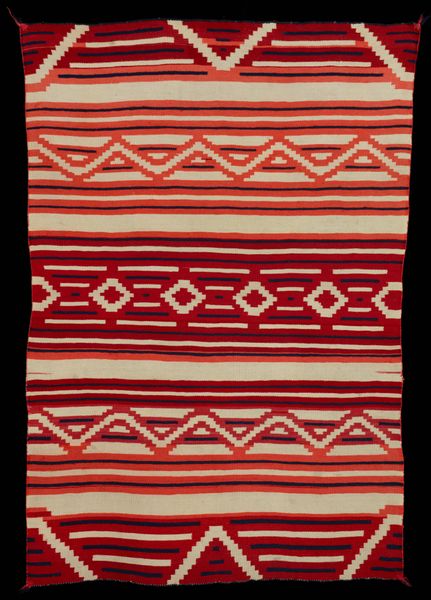
fibre-art, weaving, textile
#
fibre-art
#
weaving
#
textile
#
geometric pattern
#
geometric
#
geometric-abstraction
#
indigenous-americas
Dimensions: 15.6 × 60.3 cm (6 1/8 × 23 3/4 in.)
Copyright: Public Domain
Curator: Here we have "Fragment (Border)," a textile weaving by the Chancay people. Dating from possibly 1000 to 1476, this piece of fibre art is now held at the Art Institute of Chicago. Editor: My initial reaction? The angularity! It’s somehow both visually dynamic and rhythmically calming, that consistent diagonal motif, like birds perpetually in flight. It almost whispers ancient secrets. Curator: Exactly! It’s compelling, isn't it? What’s so striking to me is that these abstract patterns—the repeating stepped triangles—weren't just decorative. They held profound symbolic weight, linked to beliefs, social structures, perhaps even storytelling. Think of textiles as powerful visual language! Editor: Yes, absolutely. Textiles are so often dismissed as “craft,” particularly those made by women and Indigenous peoples. But this fragment confronts that directly. The technique speaks to an understanding of geometry and sophisticated mathematical principles. We should acknowledge these contributions. Curator: The earthy tones also feel deliberate. The faded reds and ochres root it in a particular landscape, a worldview tied to specific pigments and available materials. I almost sense the dust of the Peruvian desert clinging to it. Editor: And it also hints at the violence of colonization, doesn't it? That a fragment is all that remains reminds us of what has been taken. Where are the complete pieces? What stories are lost forever? This remnant forces a confrontation with colonial legacies and the systematic erasure of Indigenous cultures. Curator: True. Yet, the piece persists, hasn't it? Even fragmented, the weaving emanates beauty, endurance, and profound artistic accomplishment. It speaks to an undying creative spirit. Editor: A powerful testament, absolutely. Its mere survival acts as resistance. Viewing it is an invitation to listen to marginalized voices, consider intersectional experiences, and fight for cultural preservation in the face of ongoing colonial violence. Curator: Looking at "Fragment (Border)," I feel this piece offers a tangible connection to ancestors who poured their creativity and cosmology into the work. It prompts deep introspection on our shared human story. Editor: Indeed, and compels us to contemplate our present obligations to the past—and to all who continue these traditions today.
Comments
No comments
Be the first to comment and join the conversation on the ultimate creative platform.


